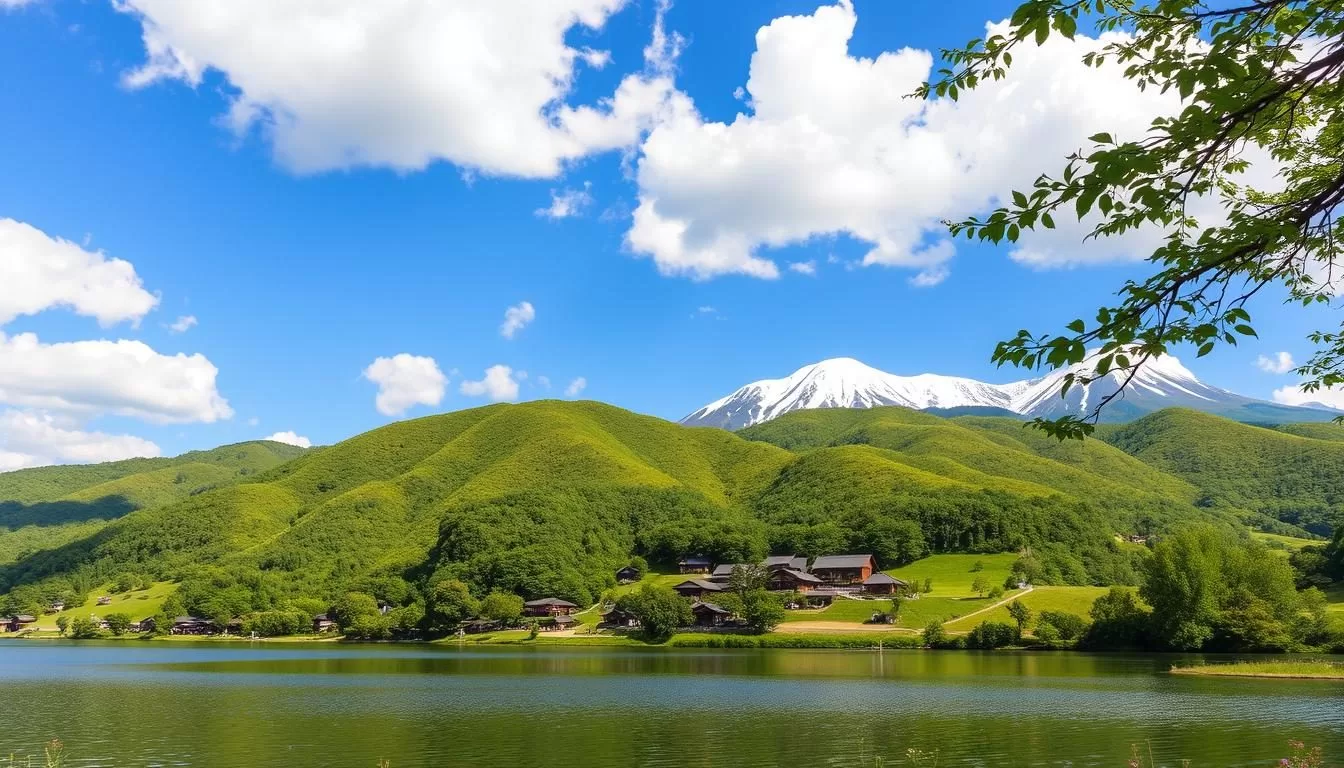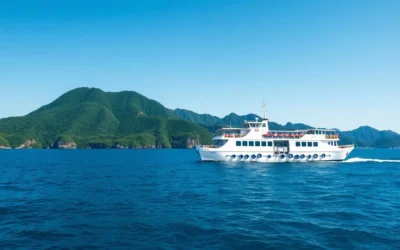✓ Accommodations ✓ Flights ✓ Rental Cars
Planning a trip to Kagawa Prefecture can be a delightful experience, given its rich cultural heritage and breathtaking landscapes. As Japan’s smallest prefecture, Kagawa is packed with attractions, from the art islands like Naoshima and Teshima to its culinary delights such as Sanuki udon.
The seasonal weather in Kagawa significantly influences the experience of visitors. Understanding the climate patterns throughout the year is crucial for making the most out of your trip. Whether you’re interested in cherry blossom viewing, summer festivals, autumn foliage, or winter attractions, timing your visit according to the season is key.
This guide will help you navigate through the best months to visit, ensuring that your trip to Kagawa is nothing short of exceptional. By considering the weather and seasonal highlights, you can plan a truly memorable journey.
Discovering Kagawa Prefecture: Japan’s Hidden Gem
For those looking to venture off the beaten path in Japan, Kagawa Prefecture presents an exciting opportunity to discover its rich heritage and breathtaking landscapes. As you plan your visit, you’ll find that Kagawa is a treasure trove of experiences waiting to be uncovered.
Geographic Location and Significance
Kagawa Prefecture is located on the island of Shikoku, Japan, and is known for its strategic position along the Seto Inland Sea. This significant location has made it a hub for cultural and economic exchange throughout history. The prefecture’s geography is characterized by its scenic coastal views, islands, and mountains, making it an attractive destination for nature lovers and those seeking relaxation.
What Makes Kagawa Unique
Kagawa stands out for its unique blend of traditional and contemporary attractions. The prefecture is home to the renowned art islands, including Naoshima, Teshima, and Shodoshima, which have become a global art destination. Naoshima, for instance, is celebrated for its modern and contemporary art installations, such as the yellow pumpkin by Yayoi Kusama and works by James Turrell and Lee Ufan. Visitors can enjoy a serene hot springs experience, savor the local cuisine like Sanuki udon, and explore the historic Shikoku Pilgrimage route, which spans 88 temples, several of which are located in Kagawa. This diverse range of experiences makes Kagawa a fascinating place to visit at any time, offering a distinct way to explore Japan’s culture, history, and natural beauty.
Whether you’re an art enthusiast, a foodie, or a history buff, Kagawa Prefecture has something to offer, making it a compelling addition to your travel itinerary. By exploring Kagawa, you’ll discover a unique side of Japan that blends tradition with modernity in a captivating way.
Understanding Kagawa’s Climate Year-Round
To make the most of your trip to Kagawa, it’s essential to grasp the nuances of its climate throughout the year. Kagawa Prefecture experiences a temperate climate with four distinct seasons, each offering unique experiences for visitors.
Temperature Patterns Throughout the Year
Kagawa’s temperature varies significantly across the seasons. Spring (March to May) and autumn (September to November) are mild and comfortable, with temperatures ranging from 10°C to 25°C. Summer can be hot and humid, with temperatures often above 30°C, while winters are generally cool, with temperatures sometimes dropping below 0°C.
Summer is the peak tourist season, but it’s also the hottest and most humid time of the year. If you’re sensitive to heat, consider visiting during the spring or autumn for more comfortable temperatures.
Precipitation and Humidity Considerations
Kagawa’s precipitation patterns are influenced by its location in the Seto Inland Sea’s rain shadow, resulting in relatively less rainfall compared to other parts of Shikoku. However, the region still experiences a rainy season, known as tsuyu, from June to mid-July.
| Month | Average Rainfall (mm) | Average Temperature (°C) |
|---|---|---|
| June | 180 | 22 |
| July | 150 | 28 |
| August | 100 | 30 |
Understanding these climate patterns can help you plan your trip during the best time to visit Kagawa, avoiding the crowds and enjoying favorable weather conditions.
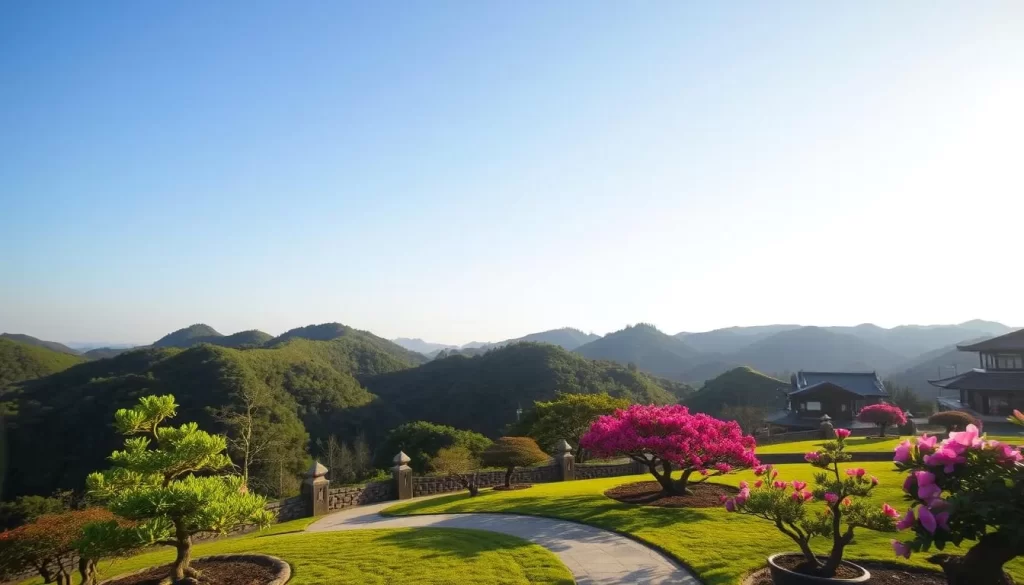
Spring in Kagawa Prefecture (March-May)
As spring unfolds, Kagawa Prefecture transforms into a vibrant tapestry of colors and festivities. The season brings mild temperatures, making it an ideal time to explore the region’s natural beauty and cultural heritage.
Cherry Blossom Season: Timing and Best Viewing Spots
Spring in Kagawa is synonymous with the breathtaking cherry blossom season. April and May are the peak months for hanami, Japan’s traditional cherry blossom viewing ritual. Locals and tourists alike flock to parks, gardens, and castle moats to picnic under the blooming cherry blossoms. Popular spots include Marugame Castle and the tree-lined brooks throughout the prefecture. You can enjoy cherry blossom-flavored desserts and seasonal foods, adding to the festive atmosphere.
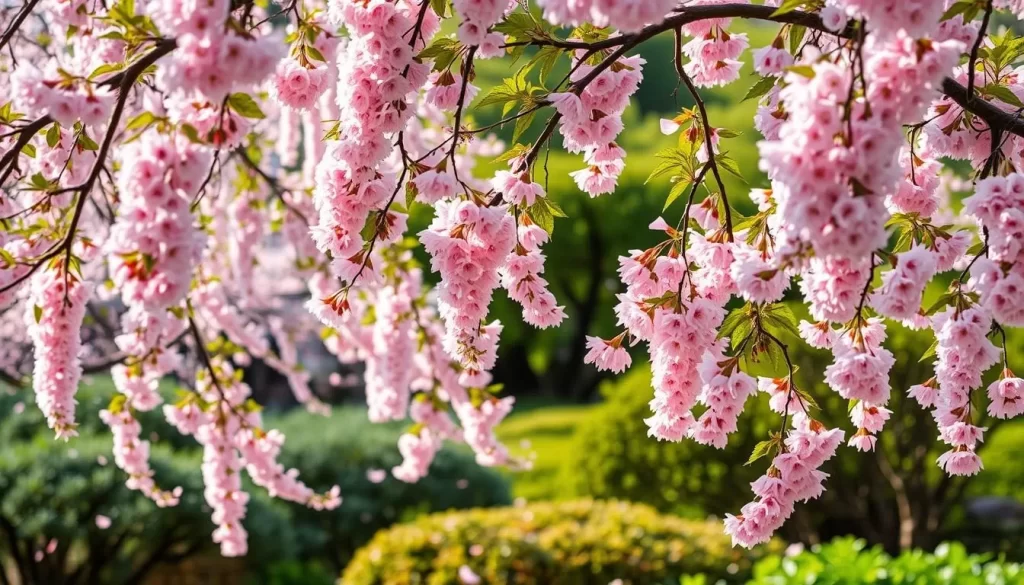
Spring Festivals and Cultural Events
Kagawa’s spring festival calendar is filled with exciting events that showcase local traditions and cuisine. The Marugame Castle Cherry Blossom Festival and the Sanuki Takamatsu Festival are highlights, featuring performances, local food, and cultural exhibitions. You can also experience unique spring cultural events, such as special art exhibitions on Naoshima and Teshima, which coincide with the pleasant spring weather. Traditional spring ceremonies at Kagawa’s temples and shrines, including those along the Shikoku Pilgrimage route, offer a glimpse into the region’s rich cultural heritage.
Spring is considered one of the best times to visit Japan, and Kagawa is no exception. The prefecture offers a perfect balance of comfortable temperatures, natural beauty, and cultural richness without the extreme crowds of Golden Week. You can savor springtime food specialties, from seasonal seafood to special spring editions of the famous Sanuki udon, and enjoy the authentic culinary experiences that Kagawa has to offer.
Summer Adventures in Kagawa (June-August)
As summer unfolds, Kagawa Prefecture transforms into a vibrant destination, full of exciting adventures and cultural experiences. You can enjoy a wide range of activities, from traditional festivals to refreshing coastal adventures.
Navigating the Heat and Rainy Season
Summer in Kagawa is characterized by warm temperatures and occasional rain showers. Despite the heat, late July to August is considered the great time to experience the Japanese fireworks festival of Hanabi, a spectacle that illuminates the summer nights.
You can still enjoy various outdoor activities like hiking and water sports at the beach. The rainy season, though brief, brings a lush green landscape, making it a beautiful time for nature walks and treks.
| Activity | Location | Best Time |
|---|---|---|
| Fireworks Festival | Takamatsu Port | Late July to August |
| Hiking | Shodoshima Island | June to July |
| Beach Activities | Naoshima Beach | July to August |
Summer Festivals and Coastal Activities
Kagawa’s summer festivals are a major draw, with events like the Takamatsu Port Festival and the Sanuki Takamatsu Fireworks Display. You can experience the traditional Bon Odori dance festivals in various towns, immersing yourself in local culture.
For a refreshing experience, you can enjoy swimming at beaches on Shodoshima and Naoshima or take a sunset cruise on the Seto Inland Sea. Summer is a time for outdoor fun and cultural exploration in Kagawa.

As you explore Kagawa during the summer, you’ll discover that it’s a great time to enjoy the local seafood and vibrant evening markets. The combination of cultural events, outdoor activities, and natural beauty makes Kagawa an ideal summer destination.
Kagawa Prefecture, Japan: Best Months for a Weather-Savvy Trip
For travelers planning a trip to Kagawa, understanding the seasonal weather patterns is key to a memorable experience. The prefecture offers a unique blend of natural beauty and cultural experiences throughout the year, but certain months stand out for their pleasant weather and exciting events.
May: Perfect Balance of Weather and Art
May is an ideal month to visit Kagawa, offering a perfect balance of pleasant weather and cultural experiences. The temperatures are mild, making it an excellent time to explore Naoshima, Teshima, and other art islands. If you’re wondering about the best time to visit Naoshima art island, May is a great choice due to its comfortable temperatures and fewer crowds.
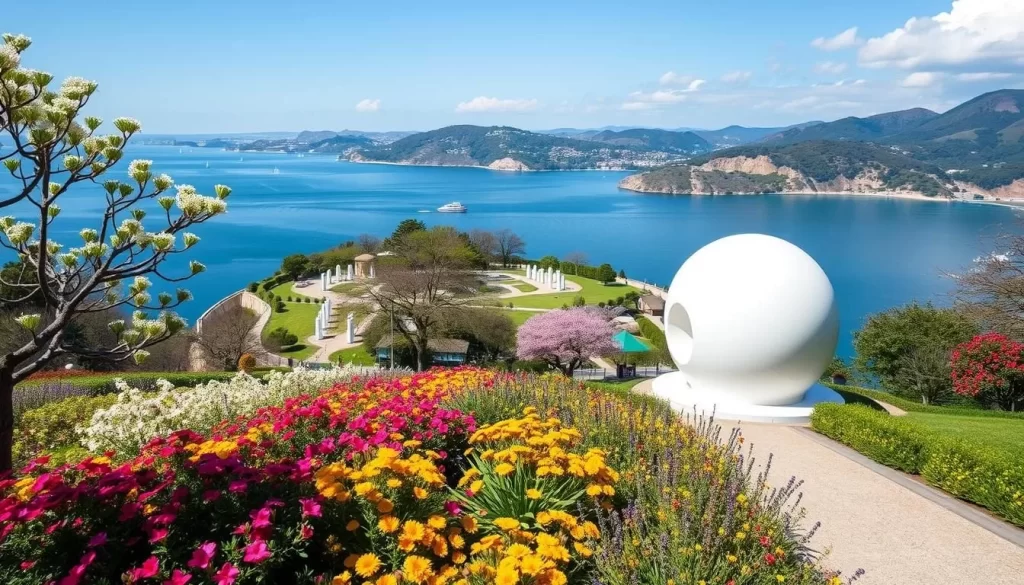
October-November: Fall Foliage and Comfortable Temperatures
Autumn in Kagawa, particularly in October and November, is characterized by stunning fall foliage and comfortable temperatures ranging from 15-22°C. The fall season brings vibrant colors to the region, with popular spots like Ritsurin Garden and Kotohira-gu Shrine offering breathtaking views. These months are considered among the best times to visit Kagawa, enjoying outdoor activities without the summer heat or winter chill.
- Discover Kagawa’s pleasant autumn weather, ideal for outdoor exploration.
- Explore the best fall foliage viewing spots, including Ritsurin Garden and Kotohira-gu Shrine.
- Enjoy hiking and visiting outdoor art installations in comfortable temperatures.
- Savor autumn food specialties, enhancing local dishes like Sanuki udon.
Exploring Kagawa’s Art Islands
As you explore Kagawa Prefecture, you’ll discover a treasure trove of art islands that showcase innovative and immersive art experiences. The islands of Naoshima, Teshima, and others in the Setouchi region have become a hub for contemporary art, attracting visitors from around the world.
Naoshima: Contemporary Art in Natural Settings
Naoshima is a pioneer among Kagawa’s art islands, renowned for its contemporary art museums, sculptures, and installations set amidst stunning natural landscapes. You’ll be captivated by iconic artworks like Yayoi Kusama’s Yellow Pumpkin and James Turrell’s Open Sky, which blend seamlessly into the island’s scenery.
The island’s commitment to art is evident in its numerous museums and galleries, including the Chichu Art Museum, which features works by Claude Monet, James Turrell, and Walter De Maria. As you wander through Naoshima’s villages and coastal areas, you’ll encounter an array of art installations that reflect the island’s unique character.
Teshima and Other Art Destinations
Teshima, another gem in Kagawa’s art island crown, is celebrated for its Teshima Art Museum, where nature, architecture, and art converge to create an immersive experience. The museum’s design, featuring a concrete shell with a single opening, allows natural light and wind to influence the interior atmosphere, making each visit distinct.
Beyond Naoshima and Teshima, the Setouchi region encompasses other art islands like Inujima, Megijima, and Ogijima, each with its own artistic identity. The Setouchi Triennale, a contemporary art festival held every three years, brings these islands together, offering a rich cultural experience. When planning your visit, consider the festival schedule to catch the latest art installations and events.
To make the most of your art island adventure, plan your island-hopping itinerary according to ferry schedules, which vary by season. The best time to visit Japan for this experience is during spring or autumn, when the weather is mild and conducive to exploring the islands. Whether you choose to stay overnight or visit as part of a day trip, Kagawa’s art islands promise an unforgettable journey into the world of contemporary art.
Winter Travel in Kagawa (December-February)
Winter in Kagawa, Japan, is a season of subtle beauty and unique experiences. As the cold weather sets in, the prefecture transforms into a serene landscape, offering visitors a chance to explore its cultural and natural attractions in a peaceful atmosphere.
Winter Weather Conditions and Preparations
December brings clear blue skies and cold temperatures to Kagawa, making it an ideal time for outdoor activities like visiting the famous Ritsurin Garden, which is especially beautiful during the winter illumination events. To prepare for your trip, pack warm clothing, including a good coat, gloves, and hat, as temperatures can drop significantly. You should also be prepared for the New Year celebrations, which are an integral part of Japanese culture, with many locals participating in traditional events like Toshikoshi Soba (year-end soba noodles) and Joya-no-kane (ringing of the New Year bells).
Winter Attractions and Off-Season Benefits
Despite the cold, winter is a great time to enjoy Kagawa’s hot springs, a perfect way to warm up and relax. The off-season also means fewer crowds at popular attractions, allowing for a more intimate experience. You can explore the Shikoku Pilgrimage route, visit the art islands without the crowds, and enjoy one best times for photography and art appreciation. Additionally, winter is a great time to savor local cuisine, including hot pot dishes and seasonal seafood, which are at their peak flavor during the colder months.
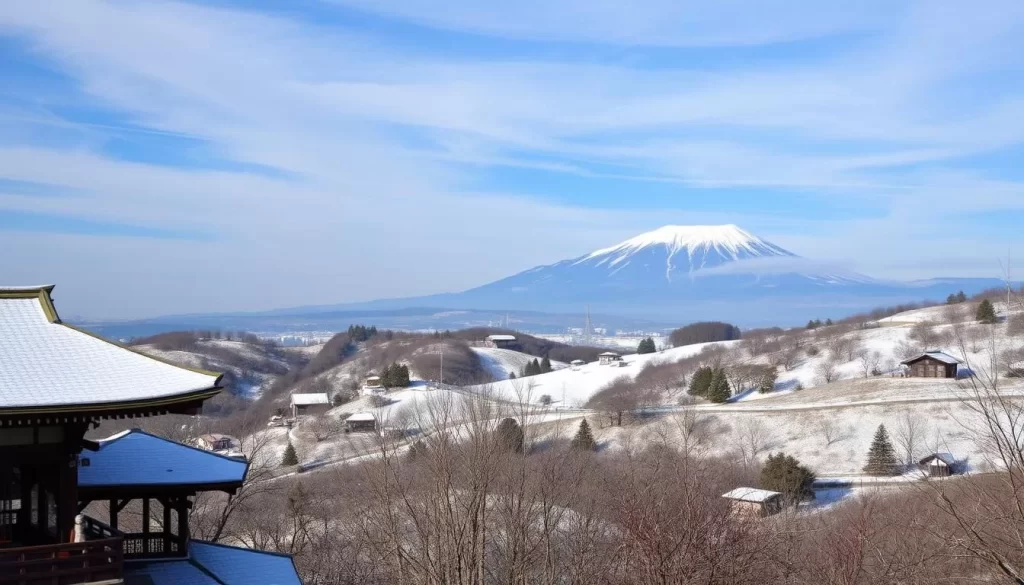
Visiting Kagawa in winter can be a rewarding experience, offering a unique perspective on this beautiful prefecture. With its serene landscapes, cultural events, and delicious local cuisine, Kagawa is a great destination for travelers looking for a peaceful and enriching experience.
Practical Travel Tips for Your Kagawa Visit
To ensure a smooth and enjoyable journey to Kagawa, understanding the practical aspects of travel is crucial. As you plan your visit, considering the time of year and how it affects your travel plans is essential.
Transportation Options Throughout the Seasons
Kagawa’s transportation infrastructure varies by season, impacting how you navigate the prefecture. During peak travel times, such as cherry blossom season or autumn foliage, expect larger crowds and plan accordingly. Utilizing public transportation or renting a car can be effective ways to get around, depending on your itinerary and preferred travel style. For the one best experience, consider avoiding travel during extremely hot summer days or overly cold winter mornings.
Accommodation Recommendations by Season
Choosing the right accommodation can significantly enhance your Kagawa experience. During peak seasons, such as spring and autumn, booking in advance is advisable to secure your preferred lodging. Kagawa offers a range of accommodations, from luxury art hotels to traditional ryokans and budget-friendly guesthouses. For instance, staying in a ryokan with kotatsu (heated tables) can be a cozy winter delight, while hotels with rooftop terraces offer a pleasant way to enjoy summer evenings.
By tailoring your accommodation choice to the season, you can enjoy a more comfortable and immersive experience in Kagawa.
Conclusion: Planning Your Weather-Perfect Trip to Kagawa
Whether you’re drawn to cherry blossoms, autumn foliage, or unique cultural experiences, Kagawa Prefecture has something to offer in every season. By understanding the characteristics of each time of year, you can plan a trip that suits your preferences. Spring (April-May) and autumn (October-November) are highlighted as the best times to visit, offering pleasant weather and spectacular natural beauty.
You now have a comprehensive guide to balance the trade-offs between peak season experiences and the advantages of visiting during shoulder seasons, ensuring a memorable journey through this rich corner of Japan.
The above is subject to change.
Check back often to TRAVEL.COM for the latest travel tips and deals.
